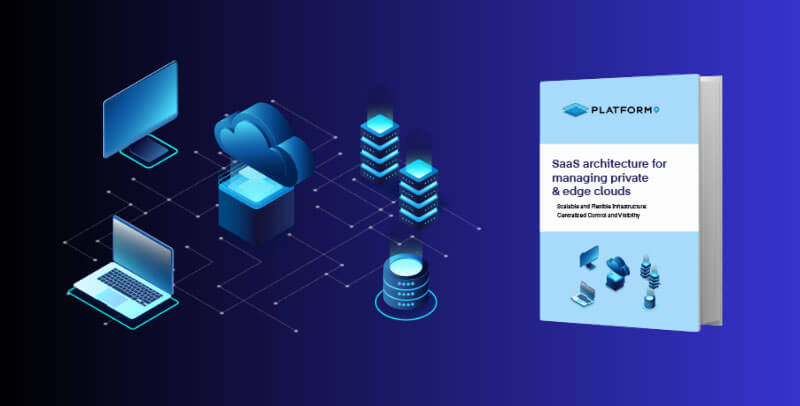Use Case Edge
European Retailer Deploys Platform9 to Accelerate Digital Transformation
Kubernetes for Retail Platform9’s Managed OpenStack solution enabled this international retailer to achieve its key technology transformation objectives via a cost-effective, highly reliable, production-grade private cloud solution. The IT team values the managed services element of the Platform9 offerings. Top 5 benefits include: Cloud-Native Time to Market Ease of deployment Unlocking the potential of microservices
Distributed Edge with Managed Kubernetes
Edge computing unlocks many opportunities, but has its own technical challenges to do right. The Platform9 distributed architecture of its Managed Kubernetes service helps telcos, retailers, manufacturers, enterprises, ISVs, and SaaS vendors unlock the potential of their applications across edge computing use cases. Read this white paper to learn: The distributed architecture of the Platform9
Architects guide to building private & edge clouds
The success of the public cloud has educated the world about what is possible when infrastructure can be consumed at scale with the speed and simplicity made possible by SaaS management. The days of private clouds being managed in more traditional, labor intensive ways are numbered. The speed, savings and simplification of SaaS based management
Building and Operating Cloud Platforms at the Edge
Developers, used to the public cloud paradigm, now expect scalable, easily programmable, and highly responsive infrastructure at the edge to rapidly deploy and manage low-latency and high bandwidth apps that will run closer to the users. In this webinar, technology leaders in technology, telco, retail, and media/entertainment will learn about the top 5 architectural and
Solving the Kubernetes Edge Platform Challenge
Kubernetes Edge Platform Kubernetes edge cloud trends are clear, but also give rise to new operational challenges. The breadth and scale of the edge make existing architectures totally insufficient. The cost and complexity of management make traditional virtualization and process solutions at the edge far less effective. Remote management will be required to overcome the






